Zola Mahlaza
An evaluation of template and ML-based generation of user-readable text from a knowledge graph
Jun 06, 2021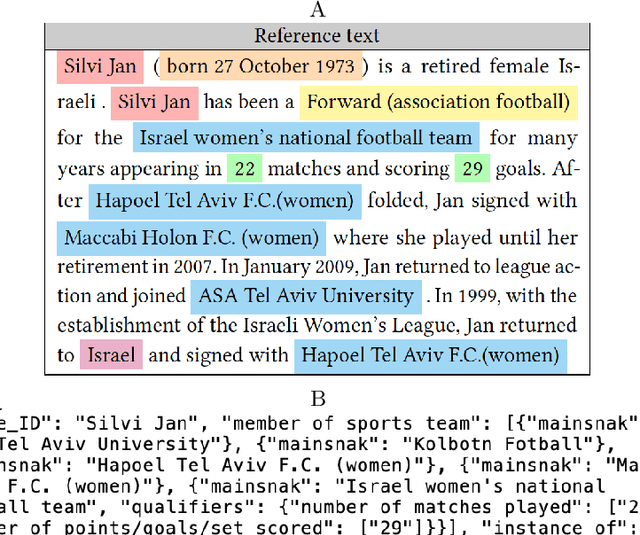

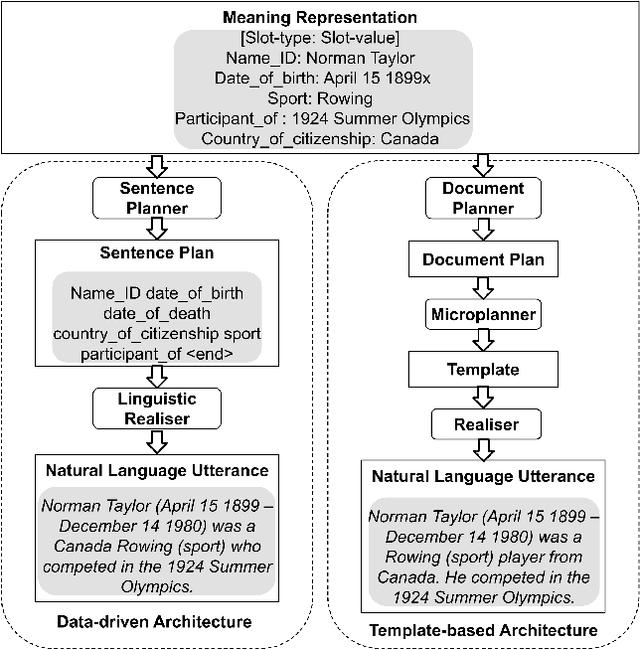
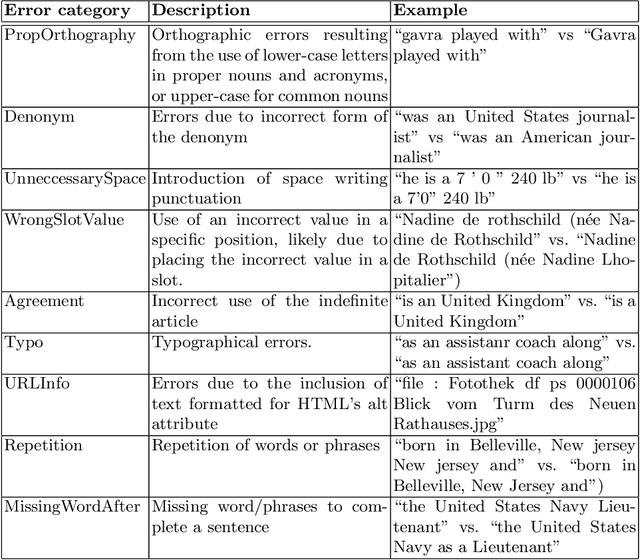
Abstract:Typical user-friendly renderings of knowledge graphs are visualisations and natural language text. Within the latter HCI solution approach, data-driven natural language generation systems receive increased attention, but they are often outperformed by template-based systems due to suffering from errors such as content dropping, hallucination, or repetition. It is unknown which of those errors are associated significantly with low quality judgements by humans who the text is aimed for, which hampers addressing errors based on their impact on improving human evaluations. We assessed their possible association with an experiment availing of expert and crowdsourced evaluations of human authored text, template generated text, and sequence-to-sequence model generated text. The results showed that there was no significant association between human authored texts with errors and the low human judgements of naturalness and quality. There was also no significant association between machine learning generated texts with dropped or hallucinated slots and the low human judgements of naturalness and quality. Thus, both approaches appear to be viable options for designing a natural language interface for knowledge graphs.
CLaRO: a Data-driven CNL for Specifying Competency Questions
Jul 17, 2019
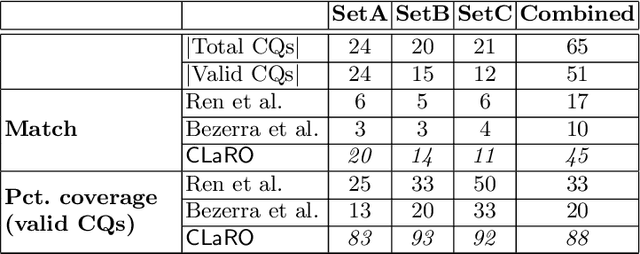
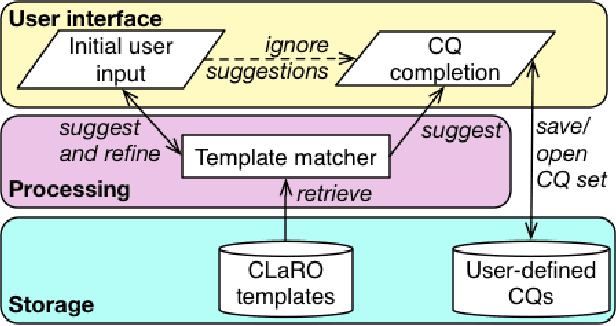
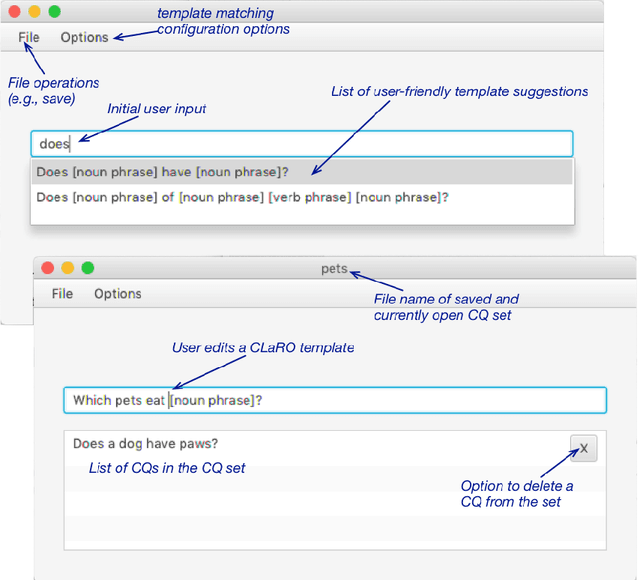
Abstract:Competency Questions (CQs) for an ontology and similar artefacts aim to provide insights into the contents of an ontology and to demarcate its scope. The absence of a controlled natural language, tooling and automation to support the authoring of CQs has hampered their effective use in ontology development and evaluation. The few question templates that exists are based on informal analyses of a small number of CQs and have limited coverage of question types and sentence constructions. We aim to fill this gap by proposing a template-based CNL to author CQs, called CLaRO. For its design, we exploited a new dataset of 234 CQs that had been processed automatically into 106 patterns, which we analysed and used to design a template-based CNL, with an additional CNL model and XML serialisation. The CNL was evaluated with a subset of questions from the original dataset and with two sets of newly sourced CQs. The coverage of CLaRO, with its 93 main templates and 41 linguistic variants, is about 90% for unseen questions. CLaRO has the potential to facilitate streamlining formalising ontology content requirements and, given that about one third of the competency questions in the test sets turned out to be invalid questions, assist in writing good questions.
 Add to Chrome
Add to Chrome Add to Firefox
Add to Firefox Add to Edge
Add to Edge